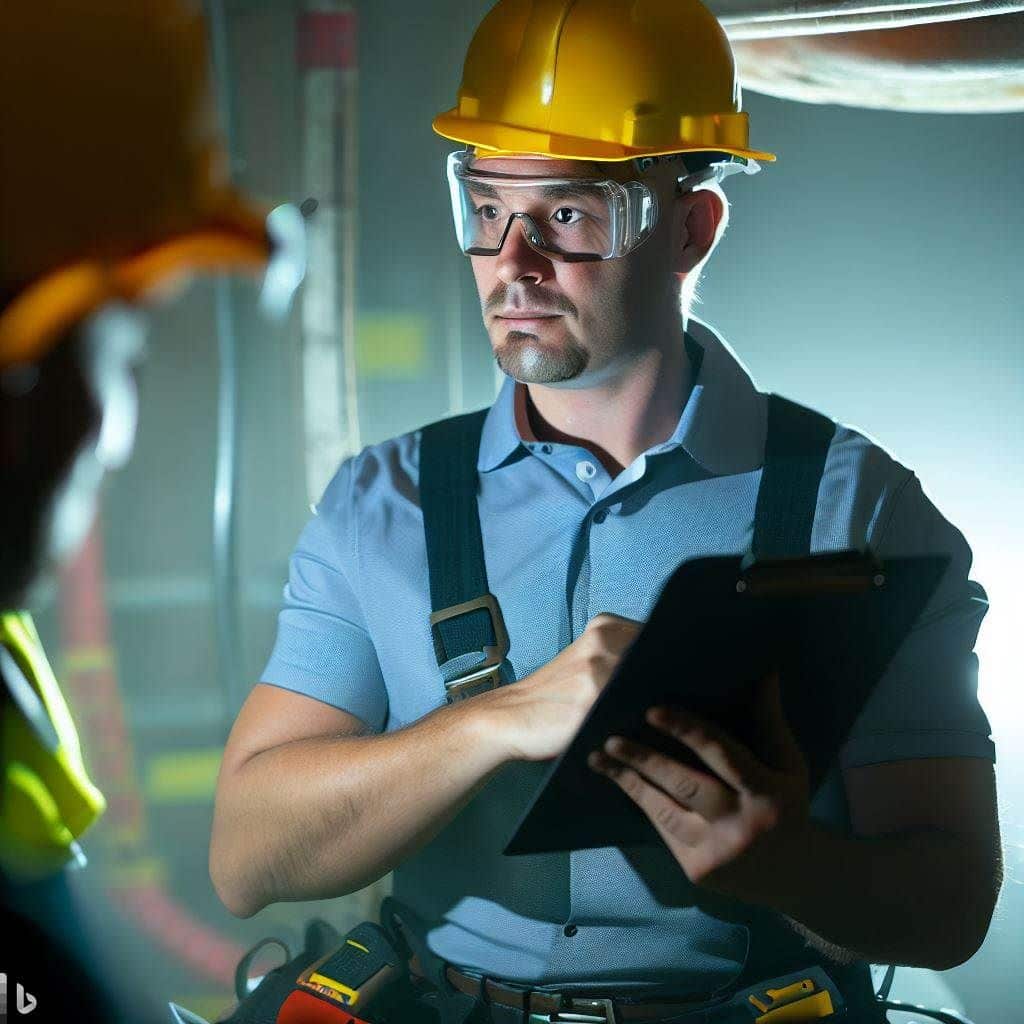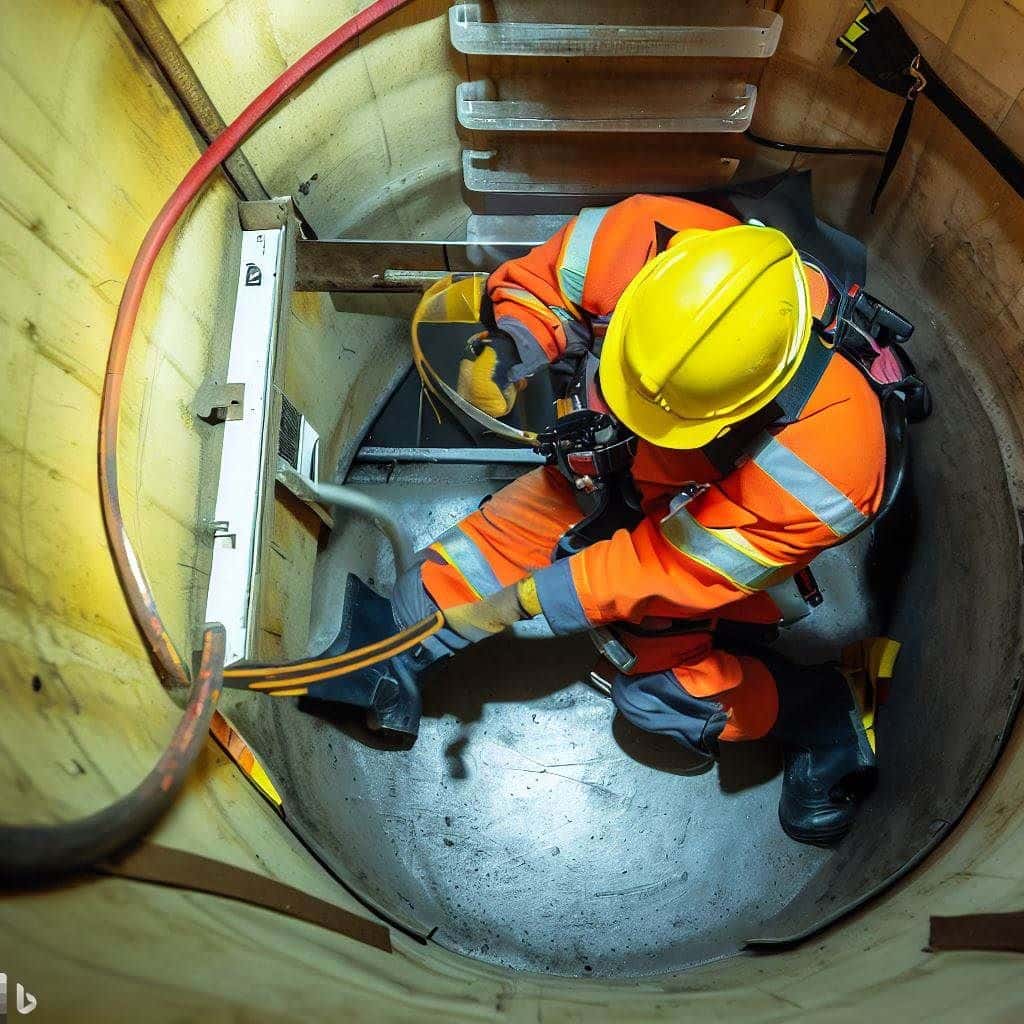Discover the Top Experts: Who Can Teach Confined Space Training Effectively?
Confined space training has become essential to workplace safety in various industries. This specialized training aims to educate workers on the hazards and dangers of working in confined spaces, such as tunnels, tanks, silos, and pipelines. It also helps workers develop essential skills to work safely and efficiently in such environments, significantly reducing the chances of accidents, injuries, and fatalities.
Confined spaces present unique challenges, including limited access and egress, restricted movement, and potential hazards such as toxic gases, engulfment, and asphyxiation. These hazards make confined spaces dangerous, requiring specialized knowledge and training to ensure workers are well-prepared. As a result, the demand for qualified and experienced professionals who can teach confined space training effectively is on the rise.
This article will discuss the importance of confined space training, the qualifications required for experts in this field, and how to find the right instructor for your organization. We will also explore some top organizations and professionals offering confined space training courses and the various delivery modes available.
Importance of confined space training
Confined space training is crucial for several reasons. First, it helps workers understand the dangers and risks associated with working in confined spaces, enabling them to make informed decisions about their safety. This awareness is essential for reducing the chances of accidents and injuries, which can have severe consequences for workers and organizations.
Second, confined space training equips workers with the necessary skills and knowledge to perform their tasks effectively and safely. This includes understanding the proper use of personal protective equipment (PPE), hazard identification and control, emergency response procedures, and effective communication strategies. Workers with confined space training are better equipped to handle unexpected situations and react appropriately, minimizing potential harm.
Lastly, confined space training is often a legal requirement in many jurisdictions. Employers must provide adequate training to their workers, ensuring they are competent and safe when working in confined spaces. Failure to meet these requirements can result in hefty fines, penalties, and even criminal charges for organizations and their management.

Essential Qualifications for confined space training instructors
When finding an instructor who can teach confined space training effectively, there are several qualifications and attributes to look for. Some of the essential qualifications for confined space training instructors include the following:
- Relevant industry experience: Instructors should have hands-on experience working in confined spaces within their teaching industry. This experience allows them to provide real-world examples and insights, making the training more engaging and relevant for learners.
- Training and education: Instructors should have formal training in confined space safety and related topics. This may include certifications from recognized organizations, such as the National Institute for Occupational Safety and Health (NIOSH) or the Occupational Safety and Health Administration (OSHA).
- Teaching experience: Effective instructors should have a proven track record of teaching confined space training courses to various audiences. This experience ensures they have the skills to effectively communicate complex concepts and ideas, engage learners, and assess their understanding of the material.
- Communication and interpersonal skills: Confined space training instructors must be able to communicate clearly and effectively with their audience. They should also possess strong interpersonal skills, allowing them to establish rapport with learners and foster a supportive and engaging learning environment.
How to find the right confined space training expert
Finding the right confined space training expert for your organization can be challenging. Here are some steps to help you find the right expert for your needs:
- Research potential candidates: Research potential instructors and organizations offering confined space training courses. Look for professionals with relevant industry experience, certifications, and a proven track record of successful training programs.
- Ask for recommendations: Reach out to industry peers, colleagues, and other organizations that have undergone confined space training for recommendations. This can help you identify reputable instructors and organizations with a strong track record in delivering effective training.
- Interview potential instructors: Conduct interviews with potential instructors to gauge their expertise, teaching style, and communication skills. This allows you to assess their suitability for your organization’s needs and expectations.
- Request references and testimonials: Ask potential instructors for references and testimonials from previous clients. This can provide valuable insights into their effectiveness as trainers and their ability to meet the unique needs of different organizations.
- Consider cost and availability: Finally, consider factors such as cost and availability when selecting a confined space training expert. While investing in quality training is essential, ensure that the chosen instructor fits your organization’s budget and schedule.
Top organizations and professionals offering confined space training
Several reputable organizations and professionals are offering high-quality confined space training courses. Some of the top providers include:
- Occupational Safety and Health Administration (OSHA): OSHA offers confined space training through its Outreach Training Program, including general industry and construction courses. These courses are taught by authorized OSHA trainers and provide comprehensive training in confined space safety.
- National Fire Protection Association (NFPA): NFPA offers a variety of confined space training courses, including those focused on rescue techniques, hazard recognition, and entry procedures. These courses are designed for emergency responders, industrial workers, and safety professionals.
- National Safety Council (NSC): The NSC offers confined space training courses that cover hazard identification, entry procedures, and emergency response. Their courses are designed for workers and supervisors in various industries, including construction, manufacturing, and utilities.
- Industrial Safety Training Council (ISTC): The ISTC offers confined space training courses for petrochemical, construction, and general workers. Their courses cover hazard recognition, entry procedures, and rescue techniques.
- Independent professionals: Many experienced professionals offer confined space training courses as independent consultants or trainers. These experts often have extensive industry experience and can provide customized training tailored to your organization’s needs.
Evaluating a confined space training instructor’s Expertise
When evaluating a confined space training instructor’s expertise, it’s essential to consider the following factors:
- Industry experience: Look for instructors with relevant industry experience and a thorough understanding of the hazards and challenges of working in confined spaces.
- Certifications and qualifications: Ensure potential instructors possess the necessary certifications and qualifications to teach confined space training courses. This may include certifications from organizations like OSHA, NIOSH, or NFPA.
- Teaching experience: Assess the instructor’s teaching experience and ability to communicate complex concepts effectively, engage learners, and evaluate their understanding of the material.
- Customization and adaptability: Determine whether instructors can customize their training approach to meet your organization’s unique needs and requirements.
- Success stories and testimonials: Request success stories and testimonials from previous clients to gauge the instructor’s effectiveness in delivering confined space training courses.
Online vs. in-person confined space training
Confined space training can be delivered through various modes, including online and in-person courses. Each mode has advantages and drawbacks, depending on your organization’s needs and requirements.
Online training offers flexibility, allowing workers to complete it at their own pace and schedule. This can particularly benefit organizations with limited time or resources for in-person training sessions. Online courses are also cost-effective, as they typically require fewer resources and infrastructure than in-person training. However, some learners may struggle to remain engaged and motivated in an online learning environment.
In-person training provides a more hands-on, interactive experience, allowing learners to ask questions, participate in discussions, and receive immediate feedback from the instructor. This can lead to a deeper understanding of the material and better retention of the concepts taught. In-person training also allows for practical exercises and simulations, which can be crucial in confined space training. However, in-person training can be more time-consuming and resource-intensive than online courses.
Ultimately, online and in-person confined space training will depend on your organization’s unique needs, resources, and preferences.

Case studies of successful confined space training programs
Several organizations have successfully implemented confined space training programs, improving safety and reducing incidents. Here are a few case studies as examples:
- Case Study 1: A manufacturing company implemented a comprehensive confined space training program for employees working in confined spaces, such as tanks and silos. The training included hazard identification, proper use of PPE, and emergency response procedures. As a result, the company saw a significant reduction in confined space-related incidents and improved overall safety performance.
- Case Study 2: A construction company conducted confined space training for its workers involved in tunneling, excavation, and other confined space tasks. The training focused on hazard recognition, entry procedures, and safe work practices. Following the training, the company experienced a notable decrease in confined space-related injuries and enhanced worker productivity.
- Case Study 3: A utility company provided confined space training to workers responsible for maintaining underground infrastructure, such as pipelines and vaults: the training covered hazard identification, proper use of equipment, and emergency response. As a result, the company significantly improved worker safety and reduced confined space-related incidents.
Conclusion: Investing in quality confined space training
In conclusion, investing in quality confined space training is essential for organizations that require workers to operate in confined spaces. It helps to ensure worker safety, improve productivity, and meet legal requirements. By carefully selecting a qualified and experienced confined space training expert, you can provide your workers with the knowledge and skills they need to work safely and effectively in confined spaces.
Take the time to research potential instructors, evaluate their expertise, and choose the right training mode for your organization. Doing so can create a safer work environment, reduce the risk of accidents and injuries, and protect your organization from legal and financial consequences.
Frequently Asked Questions:
What certifications should a confined space training instructor possess?
A confined space training instructor should possess certifications from recognized organizations, such as OSHA, NIOSH, or NFPA. This ensures they have the knowledge and expertise to teach confined space safety courses effectively.
How do I evaluate a confined space training instructor’s expertise?
To evaluate a confined space training instructor’s expertise, consider factors such as industry experience, certifications, teaching experience, customization and adaptability, and success stories and testimonials from previous clients.
What are the advantages and disadvantages of online vs. in-person confined space training?
Online training offers flexibility, cost-effectiveness, and convenience, while in-person training provides a more hands-on, interactive experience and allows for practical exercises and simulations. Online and in-person training will depend on your organization’s unique needs, resources, and preferences.
